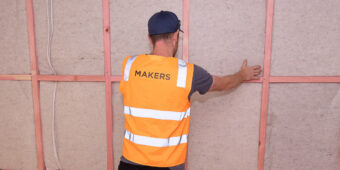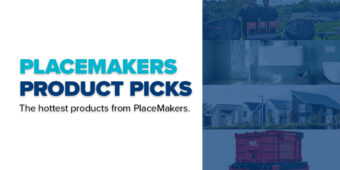MBIE suspends six aluminium composite panel (ACP) CodeMark certificates
27 Sep 2018, Industry News, News
Share the post "MBIE suspends six aluminium composite panel (ACP) CodeMark certificates"
ACP use needs to be considered on a case-by-case basis according to Acting Building System Assurance Manager
Following a number of high profile fires involving combustible, polyethylene core aluminium composite panels (ACPs) as external cladding, the use of the ACP became the subject of a number of avenues of inquiry, both in New Zealand and internationally. Following the New Zealand enquiry, MBIE decided to cancel six ACP Codemark certificates due to a lack of documentation.
Lines of defence
New Zealand’s performance-based Building Code provides multiple lines of fire defence. A multi-storey building constructed in New Zealand would have active fire protection (for example smoke detection, a building wide alarm, and an automatic sprinkler system), passive fire protection (solid fire-rated construction), and an all-out evacuation plan.
Changes have been made to the NZ Building Code Acceptable Solution for Protection from Fire to restrict the use of combustible cladding on buildings above three storeys.
Metropolitan councils provided information on ACP use in New Zealand, and MBIE is satisfied there is no systemic issue of ACP use in high rise buildings in New Zealand. No significant concerns about ACP and building safety have been raised by Councils to date.
“MBIE commissioned an audit and peer review of CodeMark certificates attached to ACP products. This work was not intended to identify specific safety concerns with ACP cladding, rather to identify if there was sufficient documentation with ACP CodeMark certificates,” says Acting Building System Assurance Manager Paul Hobbs.
“The expert advice found there was insufficient documentation to support six CodeMark certificates, and manufacturers have been unable to satisfy the evidence-based requirements outlined by MBIE to support claims made in the CodeMark certificates.”
Under Section 271 of the Building Act 2004, MBIE has suspended the following CodeMark certificates:
- CMA-CM40035 Alucobond Cladding Systems
- CMA-CM40075-I01-R01 Alpolic FR ACM Panel Cladding
- CMA-CM40100 Larson FR
- CMA-CM40094 Symonite (Alubond) Cladding Systems
- CMA-CM40111-I02-R03 Symonite Cladding Systems (Reynobond FR)
- CMA-CM40193-I01-R01 Vitrabond FR Cladding System
Manufacturers now have the opportunity to rectify issues identified with their CodeMarks, which are suspended indefinitely. If these issues are not rectified, MBIE may revoke the CodeMark certificates.
“Throughout this process, MBIE’s focus has been to ensure the safety and code compliance of ACP panels, while running a fair and legally sound process.
“This process has not unearthed evidence that these products are dangerous, only that their use needs to be considered on a case-by-case basis by building consent authorities (BCAs) when considering a building consent,” Mr Hobbs says.
Building owners with concerns about cladding should contact their local council, and tenants should contact their landlord in the first instance.
About CodeMark
CodeMark is a voluntary product certification scheme that provides an easily-understood and robust way to show a building product meets the requirements of the New Zealand Building Code. A product can be a building or construction method, building design or a building material.
CodeMark is suitable for any building product but is particularly beneficial to manufacturers and suppliers of products that are innovative, new to the market or would have serious consequences if they failed. It also provides a marketing advantage as certified products are deemed to comply with the Building Code, are listed on our public Register and can use the CodeMark brand on advertising relating to the product.
CodeMark is an unchallengeable form of product assurance. Building consent authorities (BCAs, usually councils) must accept a product certificate as evidence of compliance with the Building Code – that is, as long as the product is used in accordance with the use and limitations defined on the certificate.
Register to earn LBP Points Sign in



